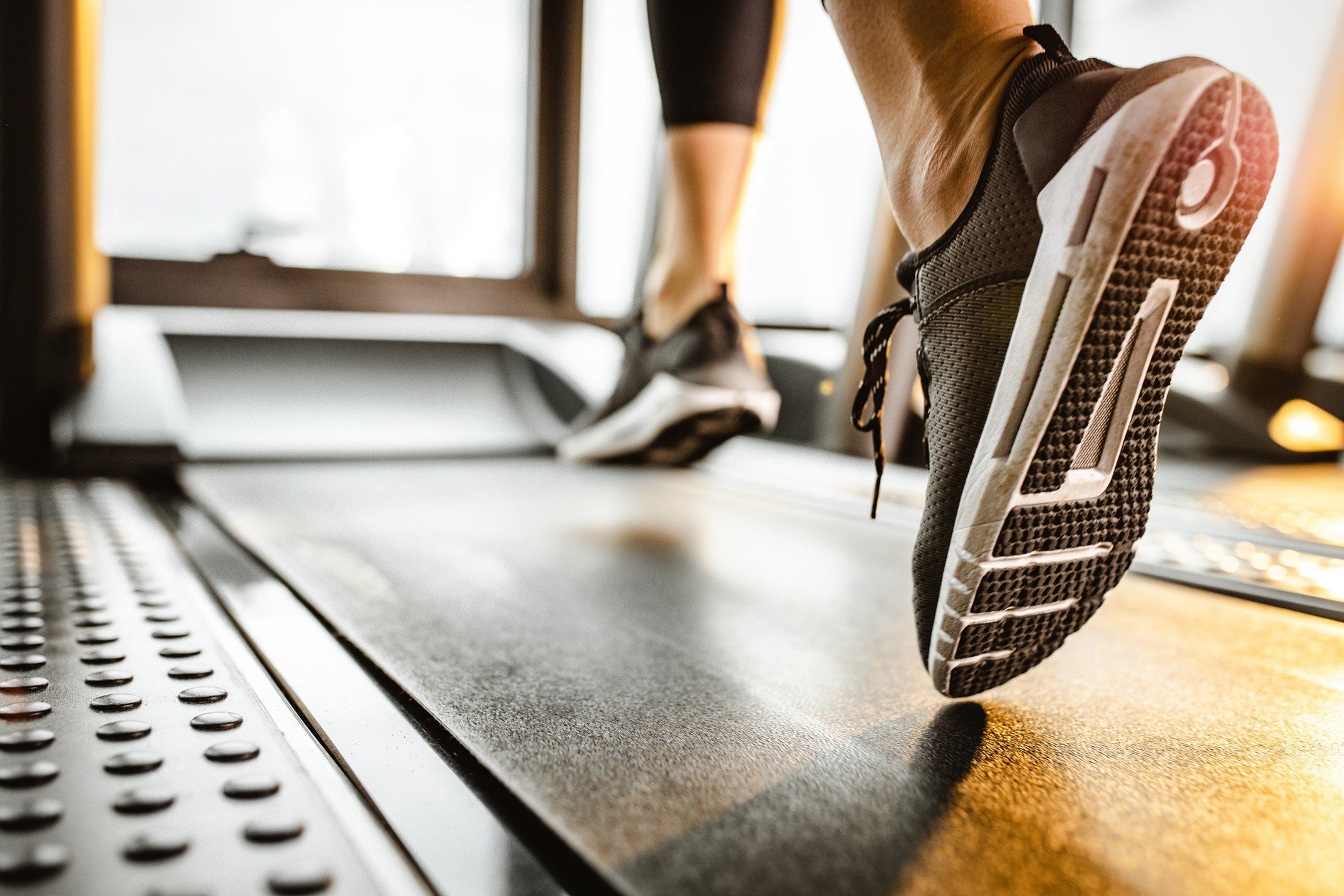


In the pursuit of achieving weight loss goals, physical activity plays a pivotal role. Engaging in regular exercise not only helps to shed unwanted pounds but also contributes to overall health and well-being. However, with the multitude of fitness options available, it can be overwhelming to determine which workout regimen is most effective for weight loss.
Enter the 12-3-30 walking workout. This innovative approach combines the benefits of incline training with brisk walking to create a powerful formula for weight loss success. By setting a treadmill to a 12% incline and maintaining a consistent speed of 3 miles per hour (mph) for a duration of 30 minutes, individuals can embark on an efficient and accessible fitness journey toward achieving their weight loss goals.
Importance of Physical Activity for Weight Loss
Weight loss is influenced by two interrelated factors: calorie consumption and calorie expenditure. While dietary adjustments are crucial in creating an energy deficit, physical activity is equally essential in tipping the scales in favor of fat burning. Regular exercise increases calorie expenditure during workouts and boosts metabolism, leading to enhanced fat-burning even during periods of rest.
Beyond its impact on caloric balance, physical activity offers numerous additional benefits that contribute to successful weight management. Engaging in regular exercise promotes cardiovascular health, strengthens muscles and bones, improves mood and mental well-being, reduces stress levels, and enhances overall body composition.
How do you do the 12-3-30 Walking Workout?
The 12-3-30 walking workout involves three key components: incline level, speed, and duration.
- Incline: By setting the treadmill at a challenging yet manageable 12% incline – simulating an uphill climb – individuals engage different muscle groups while working against gravity, leading to a more intense workout.
- Speed: A consistent speed of 3 mph is maintained throughout the workout. This place balances brisk walking and jogging, allowing individuals to maintain proper form and endurance while challenging their cardiovascular system.
- Duration: The duration of the 12-3-30 walking workout is set at 30 minutes. This time frame is both manageable for beginners and efficient for those with busy schedules, making it accessible to a wide range of individuals seeking to incorporate effective physical activity into their lives.
By carefully combining these elements, the 12-3-30 walking workout provides an optimized approach to weight loss. Its simplicity and versatility make it an appealing option for individuals of all fitness levels looking to embark on a safe, compelling, sustainable fitness journey toward shedding excess pounds.
Understanding the 12-3-30 Walking Workout
What does research say about losing weight by walking at an incline?
The Journal of Biomechanics did a study on people who walked at a 0%, 5%, and 10% incline and found that the more you increase the incline, the more the weight is lost.
The Power of Incline: Setting the Treadmill to a 12% Incline
Regarding the 12-3-30 walking workout, one crucial component that sets it apart is utilizing a 12% incline on the treadmill. This seemingly minor adjustment can have a significant impact on your fitness journey. By raising the angle, you engage different muscle groups and amplify the intensity of your workout.
Walking uphill activates your glutes, hamstrings, and calves more intensely than on a flat surface. This added resistance helps burn more calories and contributes to toning and strengthening these specific areas.
The 12% incline sets this walking workout apart from conventional treadmill routines. It challenges even seasoned fitness enthusiasts by pushing them out of their comfort zones.
The uphill element provides an opportunity for individuals seeking variety in their exercise routines or those looking to break through weight loss plateaus. It creates an environment where each step brings you closer to achieving your fitness goals.
Walking Speed: Maintaining a Steady Pace at 3 Miles per Hour (mph)
In addition to incline, maintaining a consistent walking speed is another critical aspect of the 12-3-30 workout. The recommended pace for this routine is set at three mph (miles per hour).
While it may seem moderate compared to running or high-intensity workouts, this deliberate choice allows for sustainable progress and injury prevention. Walking at a steady pace of 3 mph balances efficiency and exertion during this workout.
It ensures you can complete the total duration without feeling tired while reaping significant benefits. This moderate intensity level allows individuals with various fitness levels and abilities to participate in this routine effectively.
The Gift of Time: 30 Minutes
The third and final component of the 12-3-30 walking workout is the duration, set at a manageable 30 minutes. While some may assume that longer workouts equate to better results, this routine challenges that notion. By focusing on quality rather than quantity, this time-efficient workout optimizes your efforts and fits seamlessly into a busy schedule.
Thirty minutes may seem like a short amount of time, but it delivers impressive results when combined with an incline and steady pace. This duration strikes a balance between allowing your body to adapt and progress while still being achievable for those who are just starting their fitness journey or have limited time availability.
This specific timeframe also helps develop consistency in your exercise routine. Committing to a daily workout becomes easier when you know it won’t monopolize your entire day.
With the 12-3-30 walking workout’s duration, there are fewer reasons or excuses not to prioritize physical activity. By understanding these three components—setting the treadmill to a 12% incline, walking at a speed of 3 mph, and dedicating yourself to a 30-minute session—, you can unlock the full potential of the 12-3-30 walking workout.
This unique combination provides an effective and efficient path toward weight loss and overall fitness improvement. So lace up your shoes, step onto that treadmill with confidence, and embark on this transformative journey toward health and wellness!
Benefits of the 12-3-30 Walking Workout
Effective Calorie Burning: Step Up Your Weight Loss Game
When it comes to shedding unwanted pounds, the 12-3-30 walking workout is a powerful tool. By setting the treadmill to a challenging 12% incline and maintaining a brisk pace of 3 miles per hour for 30 minutes, you can significantly increase your calorie expenditure. The combination of incline and speed creates a greater demand on your cardiovascular system, leading to enhanced calorie burning during and after the workout.
In fact, studies have shown that walking at an incline burns roughly two times more calories compared to walking on level ground. This is because uphill walking engages larger muscle groups, such as the glutes, hamstrings, and calves, requiring more energy for propulsion against gravity.
Consequently, your body expends more calories to sustain this increased effort. Moreover, it offers unique advantages when comparing the 12-3-30 walking workout with other forms of exercise commonly used for weight loss—such as jogging or running.
While running may burn more calories per minute due to higher intensity levels, it also places significant stress on joints and can be daunting for beginners or individuals with joint issues. The 12-3-30 walking workout provides an excellent alternative by delivering similar calorie-burning benefits without subjecting your joints to disproportionate impact.
Muscle Engagement and Toning Effects: Sculpt Your Body
Walking uphill not only aids in weight loss but also engages various muscle groups across your lower body. Unlike steady flat-ground walking that mainly targets your quadriceps muscles (thighs), incorporating an incline into your routine activates additional muscles, including the glutes (buttocks), hamstrings (back thighs), and calves. The gluteal muscles, in particular, play a crucial role in maintaining proper posture, stability, and overall lower body strength.
Uphill walking effectively activates these powerhouse muscles, helping to tone and strengthen them. Strong glutes not only enhance your physical appearance but also contribute to improved functional movement patterns and reduced risk of injury.
You can achieve a more balanced physique by engaging multiple muscle groups simultaneously during the 12-3-30 walking workout. Furthermore, building lean muscle mass is vital for weight loss as it increases your basal metabolic rate (BMR), ensuring that you continue burning calories even at rest.
Low Impact on Joints and Accessibility: Exercise Without Limitations
For individuals with joint issues or injuries seeking an effective workout without exacerbating their condition, the 12-3-30 walking workout is ideal. Walking is a low-impact exercise that places minimal stress on the joints compared to running or high-intensity interval training (HIIT).
The controlled motion of walking allows individuals to engage in physical activity while minimizing the risk of joint pain or further injury. This makes it accessible to a broader range of people who may have limitations due to age or pre-existing conditions.
Furthermore, another advantage of the 12-3-30 walking workout lies in its accessibility and sustainability. Unlike intense workouts that demand significant time commitments or specialized equipment, you only need a treadmill with incline settings for this routine.
Additionally, this low-intensity exercise can be easily incorporated into daily routines, even for those with busy schedules. So lace up your shoes and embrace the simplicity and inclusivity of this incredibly effective walking routine – it’s time to take charge of your fitness journey!
Walking Technique
The Importance of Proper Walking Technique
Walking may seem like a simple activity, but employing the correct technique can enhance the benefits of the 12-3-30 walking workout. Attention to your stride, posture, and arm movements can optimize your efforts and prevent potential injuries.
Focus on Stride Length and Cadence
Maintain an appropriate stride length and cadence to get the most out of your 12-3-30 walking workout. Aim for a natural stride length that feels comfortable yet challenging.
Ensure your heel touches the ground first, followed by a roll-through motion, pushing off with the toes. Maintain a consistent rhythm by keeping a quick pace – around 120 steps per minute.
Posture Matters
Maintaining a proper posture during your walking workout is crucial for maximizing its benefits. Stand tall with your shoulders relaxed and back straight.
Engage your core muscles to support good posture throughout the exercise. Avoid slouching or leaning forward excessively, as this can strain your lower back.
Arm Swing
Proper arm movement while walking adds efficiency to your workout and engages different muscle groups. Bend your elbows at approximately 90 degrees and swing them naturally synchronously with your opposite leg. Aim for a comfortable swing that helps propel you forward without excessive tension or crossing over the midline of your body.
12-3-30 Walking Workout is Effective Cardio to Lose Weight
Incorporating the 12-3-30 walking workout into your weight loss regimen can be an effective strategy for shedding unwanted pounds while improving overall fitness levels. This straightforward routine combines specific parameters such as setting the treadmill to a 12% incline, maintaining a speed of 3mph, and exercising for 30 minutes.
By gradually incorporating this routine into one’s lifestyle, individuals can reap numerous benefits. The 12-3-30 walking workout offers an efficient calorie-burning solution that rivals other forms of exercise.
It also engages various muscle groups throughout the body, helping tone and strengthen key areas. Its low-impact nature sets the 12-3-30 walking workout apart, making it accessible to individuals with joint issues or injuries.
The incline challenges the muscles without putting excessive strain on joints, allowing for a safe and sustainable exercise option. Ultimately, the 12-3-30 walking workout provides a highly customizable and accessible means of achieving weight loss goals.
By adopting proper walking techniques and incorporating this routine into a consistent fitness routine, individuals can witness significant changes in their overall health and well-being. So lace up your sneakers, step onto that treadmill at a 12% incline, set your speed to 3mph, and get ready to embark on an invigorating journey toward a healthier you!
Reference:
Silder, A., Besier, T., & Delp, S. L. (2012). Predicting the metabolic cost of incline walking from muscle activity and walking mechanics. Journal of Biomechanics, 45(10), 1842-1849. https://doi.org/10.1016/j.jbiomech.2012.03.032
Editor's Pick



In the pursuit of achieving weight loss goals, physical activity plays a pivotal role. Engaging in regular exercise not only helps to shed unwanted pounds but also contributes to overall health and well-being. However, with the multitude of fitness options available, it can be overwhelming to determine which workout regimen is most effective for weight loss.
Enter the 12-3-30 walking workout. This innovative approach combines the benefits of incline training with brisk walking to create a powerful formula for weight loss success. By setting a treadmill to a 12% incline and maintaining a consistent speed of 3 miles per hour (mph) for a duration of 30 minutes, individuals can embark on an efficient and accessible fitness journey toward achieving their weight loss goals.
Importance of Physical Activity for Weight Loss
Weight loss is influenced by two interrelated factors: calorie consumption and calorie expenditure. While dietary adjustments are crucial in creating an energy deficit, physical activity is equally essential in tipping the scales in favor of fat burning. Regular exercise increases calorie expenditure during workouts and boosts metabolism, leading to enhanced fat-burning even during periods of rest.
Beyond its impact on caloric balance, physical activity offers numerous additional benefits that contribute to successful weight management. Engaging in regular exercise promotes cardiovascular health, strengthens muscles and bones, improves mood and mental well-being, reduces stress levels, and enhances overall body composition.
How do you do the 12-3-30 Walking Workout?
The 12-3-30 walking workout involves three key components: incline level, speed, and duration.
- Incline: By setting the treadmill at a challenging yet manageable 12% incline – simulating an uphill climb – individuals engage different muscle groups while working against gravity, leading to a more intense workout.
- Speed: A consistent speed of 3 mph is maintained throughout the workout. This place balances brisk walking and jogging, allowing individuals to maintain proper form and endurance while challenging their cardiovascular system.
- Duration: The duration of the 12-3-30 walking workout is set at 30 minutes. This time frame is both manageable for beginners and efficient for those with busy schedules, making it accessible to a wide range of individuals seeking to incorporate effective physical activity into their lives.
By carefully combining these elements, the 12-3-30 walking workout provides an optimized approach to weight loss. Its simplicity and versatility make it an appealing option for individuals of all fitness levels looking to embark on a safe, compelling, sustainable fitness journey toward shedding excess pounds.
Understanding the 12-3-30 Walking Workout
What does research say about losing weight by walking at an incline?
The Journal of Biomechanics did a study on people who walked at a 0%, 5%, and 10% incline and found that the more you increase the incline, the more the weight is lost.
The Power of Incline: Setting the Treadmill to a 12% Incline
Regarding the 12-3-30 walking workout, one crucial component that sets it apart is utilizing a 12% incline on the treadmill. This seemingly minor adjustment can have a significant impact on your fitness journey. By raising the angle, you engage different muscle groups and amplify the intensity of your workout.
Walking uphill activates your glutes, hamstrings, and calves more intensely than on a flat surface. This added resistance helps burn more calories and contributes to toning and strengthening these specific areas.
The 12% incline sets this walking workout apart from conventional treadmill routines. It challenges even seasoned fitness enthusiasts by pushing them out of their comfort zones.
The uphill element provides an opportunity for individuals seeking variety in their exercise routines or those looking to break through weight loss plateaus. It creates an environment where each step brings you closer to achieving your fitness goals.
Walking Speed: Maintaining a Steady Pace at 3 Miles per Hour (mph)
In addition to incline, maintaining a consistent walking speed is another critical aspect of the 12-3-30 workout. The recommended pace for this routine is set at three mph (miles per hour).
While it may seem moderate compared to running or high-intensity workouts, this deliberate choice allows for sustainable progress and injury prevention. Walking at a steady pace of 3 mph balances efficiency and exertion during this workout.
It ensures you can complete the total duration without feeling tired while reaping significant benefits. This moderate intensity level allows individuals with various fitness levels and abilities to participate in this routine effectively.
The Gift of Time: 30 Minutes
The third and final component of the 12-3-30 walking workout is the duration, set at a manageable 30 minutes. While some may assume that longer workouts equate to better results, this routine challenges that notion. By focusing on quality rather than quantity, this time-efficient workout optimizes your efforts and fits seamlessly into a busy schedule.
Thirty minutes may seem like a short amount of time, but it delivers impressive results when combined with an incline and steady pace. This duration strikes a balance between allowing your body to adapt and progress while still being achievable for those who are just starting their fitness journey or have limited time availability.
This specific timeframe also helps develop consistency in your exercise routine. Committing to a daily workout becomes easier when you know it won’t monopolize your entire day.
With the 12-3-30 walking workout’s duration, there are fewer reasons or excuses not to prioritize physical activity. By understanding these three components—setting the treadmill to a 12% incline, walking at a speed of 3 mph, and dedicating yourself to a 30-minute session—, you can unlock the full potential of the 12-3-30 walking workout.
This unique combination provides an effective and efficient path toward weight loss and overall fitness improvement. So lace up your shoes, step onto that treadmill with confidence, and embark on this transformative journey toward health and wellness!
Benefits of the 12-3-30 Walking Workout
Effective Calorie Burning: Step Up Your Weight Loss Game
When it comes to shedding unwanted pounds, the 12-3-30 walking workout is a powerful tool. By setting the treadmill to a challenging 12% incline and maintaining a brisk pace of 3 miles per hour for 30 minutes, you can significantly increase your calorie expenditure. The combination of incline and speed creates a greater demand on your cardiovascular system, leading to enhanced calorie burning during and after the workout.
In fact, studies have shown that walking at an incline burns roughly two times more calories compared to walking on level ground. This is because uphill walking engages larger muscle groups, such as the glutes, hamstrings, and calves, requiring more energy for propulsion against gravity.
Consequently, your body expends more calories to sustain this increased effort. Moreover, it offers unique advantages when comparing the 12-3-30 walking workout with other forms of exercise commonly used for weight loss—such as jogging or running.
While running may burn more calories per minute due to higher intensity levels, it also places significant stress on joints and can be daunting for beginners or individuals with joint issues. The 12-3-30 walking workout provides an excellent alternative by delivering similar calorie-burning benefits without subjecting your joints to disproportionate impact.
Muscle Engagement and Toning Effects: Sculpt Your Body
Walking uphill not only aids in weight loss but also engages various muscle groups across your lower body. Unlike steady flat-ground walking that mainly targets your quadriceps muscles (thighs), incorporating an incline into your routine activates additional muscles, including the glutes (buttocks), hamstrings (back thighs), and calves. The gluteal muscles, in particular, play a crucial role in maintaining proper posture, stability, and overall lower body strength.
Uphill walking effectively activates these powerhouse muscles, helping to tone and strengthen them. Strong glutes not only enhance your physical appearance but also contribute to improved functional movement patterns and reduced risk of injury.
You can achieve a more balanced physique by engaging multiple muscle groups simultaneously during the 12-3-30 walking workout. Furthermore, building lean muscle mass is vital for weight loss as it increases your basal metabolic rate (BMR), ensuring that you continue burning calories even at rest.
Low Impact on Joints and Accessibility: Exercise Without Limitations
For individuals with joint issues or injuries seeking an effective workout without exacerbating their condition, the 12-3-30 walking workout is ideal. Walking is a low-impact exercise that places minimal stress on the joints compared to running or high-intensity interval training (HIIT).
The controlled motion of walking allows individuals to engage in physical activity while minimizing the risk of joint pain or further injury. This makes it accessible to a broader range of people who may have limitations due to age or pre-existing conditions.
Furthermore, another advantage of the 12-3-30 walking workout lies in its accessibility and sustainability. Unlike intense workouts that demand significant time commitments or specialized equipment, you only need a treadmill with incline settings for this routine.
Additionally, this low-intensity exercise can be easily incorporated into daily routines, even for those with busy schedules. So lace up your shoes and embrace the simplicity and inclusivity of this incredibly effective walking routine – it’s time to take charge of your fitness journey!
Walking Technique
The Importance of Proper Walking Technique
Walking may seem like a simple activity, but employing the correct technique can enhance the benefits of the 12-3-30 walking workout. Attention to your stride, posture, and arm movements can optimize your efforts and prevent potential injuries.
Focus on Stride Length and Cadence
Maintain an appropriate stride length and cadence to get the most out of your 12-3-30 walking workout. Aim for a natural stride length that feels comfortable yet challenging.
Ensure your heel touches the ground first, followed by a roll-through motion, pushing off with the toes. Maintain a consistent rhythm by keeping a quick pace – around 120 steps per minute.
Posture Matters
Maintaining a proper posture during your walking workout is crucial for maximizing its benefits. Stand tall with your shoulders relaxed and back straight.
Engage your core muscles to support good posture throughout the exercise. Avoid slouching or leaning forward excessively, as this can strain your lower back.
Arm Swing
Proper arm movement while walking adds efficiency to your workout and engages different muscle groups. Bend your elbows at approximately 90 degrees and swing them naturally synchronously with your opposite leg. Aim for a comfortable swing that helps propel you forward without excessive tension or crossing over the midline of your body.
12-3-30 Walking Workout is Effective Cardio to Lose Weight
Incorporating the 12-3-30 walking workout into your weight loss regimen can be an effective strategy for shedding unwanted pounds while improving overall fitness levels. This straightforward routine combines specific parameters such as setting the treadmill to a 12% incline, maintaining a speed of 3mph, and exercising for 30 minutes.
By gradually incorporating this routine into one’s lifestyle, individuals can reap numerous benefits. The 12-3-30 walking workout offers an efficient calorie-burning solution that rivals other forms of exercise.
It also engages various muscle groups throughout the body, helping tone and strengthen key areas. Its low-impact nature sets the 12-3-30 walking workout apart, making it accessible to individuals with joint issues or injuries.
The incline challenges the muscles without putting excessive strain on joints, allowing for a safe and sustainable exercise option. Ultimately, the 12-3-30 walking workout provides a highly customizable and accessible means of achieving weight loss goals.
By adopting proper walking techniques and incorporating this routine into a consistent fitness routine, individuals can witness significant changes in their overall health and well-being. So lace up your sneakers, step onto that treadmill at a 12% incline, set your speed to 3mph, and get ready to embark on an invigorating journey toward a healthier you!
Reference:
Silder, A., Besier, T., & Delp, S. L. (2012). Predicting the metabolic cost of incline walking from muscle activity and walking mechanics. Journal of Biomechanics, 45(10), 1842-1849. https://doi.org/10.1016/j.jbiomech.2012.03.032







